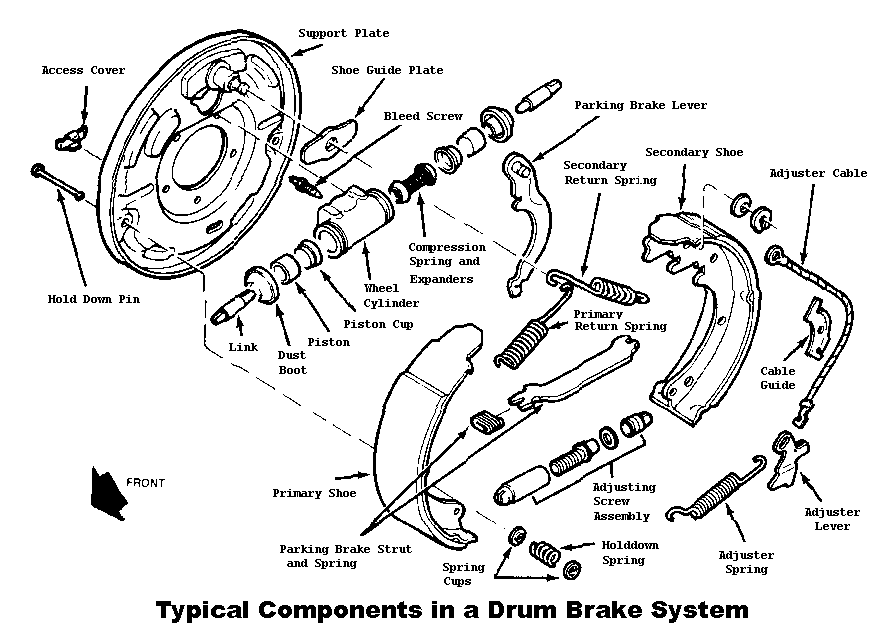Last update: March 07, 2009

©By: Harald Sakshaug - '67 +4


Formatted for the Morgan Web page by John T. Blair (WA4OHZ)
Note by John T. Blair
Regardless of what I'm playing with, ie. computers, amateur radio, cars, model airplanes, etc., one thing I always try to keep in mind, is that there is always a Novice (beginner), in the crowd. If not, what ever the endevor is doomed to die. The Novices of today will hopefully become the old timers one day and pass on what they have learned from us - the current old timeres.
If we all think back - way back - you will remember you were one once. We all needed help at sometime. And if we were very lucky, we found an "Elmer" or mentor to guide us, and not make us feel too foolish when we asked the dump questions or really did something stupid. With that in mind, I present a discussion on bleedin your brakes. I've taken the liberty of removing the name of the person, that asked the original question, to protect him. This is not ment to hold anyone up for ridicule, just to remind the old timers that there are Novices that will do dump things, and that we did too.
The Mistake - er dump question
Dumb move-no brakes at all now.
Tonight I pulled the left rear wheel off my '87 4/4 and inspected it for problems. Bought some brake cleaning spray and cleaned everything, then greased the two nipples I found behind the wheel. Took the hydraulic line off and pumped out about a half pint of fluid, then refastened it, and refilled the reservoir.The result... no brakes at all! Almost ran into the inside wall of my garage.
I could not find the leak, so time to take it to a specialist. The car is now actually leaking from both rear wheels, although the left is greater. There seemed to be no sign of a leak from the hydraulic lines, so I can't figure where it is coming from. It must be from the brake drum itself.
Everything under the car looked brand-new. All of the nuts and bolts are still shiny, like new. First time I actually looked under the car with the wheel off, and it is spotless. Cannot figure what happened with the rear drum brakes. I will have to take the car to a mechanic on Saturday morning, about 12 miles away, and will have to depend on the hand brake to make the trip.
Thanks for the tips thus far, but I am doing something wrong. A car with less than 10K miles should not have these problems, or am I wrong?
The two grease nipples behind the rear wheels... This is not by chance be the bleeder nipples for the brake fluid? If so, they should be removed and cleaned in a solvent removing all the grease. If by chance anyone of them was open letting any of the grease in the brake system, then the wheel cylinders should be dismantled and cleaned at a garage.
When you opened the hydraulic system, you let in a lot of air into your brake line system. This will effectively reduce your brakes to nil...
The best way to bleed the system for air is to get a friend to help you.
You will also need:
- (ED added) possibly a hammer (if the bleeder valve is stuck - see below)
- a box end wrench, that fits the bleeder screw
- a piece of transparent hose that fits as tightly as possible on the
bleeder nipple
- a bottle of brake fluid
- a collecting jar to catch the dumped brake fluid
- and an old rag.
(ED Note: 2009 - Remember the hammer? If you try to open the bleeder valve and it doesn't want to budge, take the hammer and tap the end of bleeder (where the hole is) in a manner that the face of the hammer sits over the opening of the bleeder. This should help break the fusion that has formed between the bottom of the bleeder and its seat in the wheel cylinder/caliper. If you break the bleeder valve off in its seat, you'll have to replace the wheel cylinder or caliper.)
As the fluid goes through the tubing, you will see the air bubbles. Repeat the process of: Press brake pedal, open bleeder nipple, watch for air, close bleeder nipple, release brake pedal. When there comes no air during a period of 5 times, then you can be pretty sure you brake line is free from air.
This procedure should be done for every one of the four wheels (the usual order is right [passanger's side] rear, left [driver's side] rear, right front and finally left front). But in your case I presume it is enough to do it for the line you opened.
BUT! be aware to keep the level of fluid in the reservoir. If it becomes to low during the bleeding process, you will actually draw air from the reservoir and pump it into the brake system. And you must start from scratch again...
----------
There are two other ways to bleed brakes:
1. Using a
pressure bleeder.
2. A second way is with a brake bleeder and vacuum pump kit like the one Harbor Freight sells.
Remember that brake fluid will eat the paint off of anything it touches!)
Return to the Index of Tech. articles
To email me with comments or questions.
